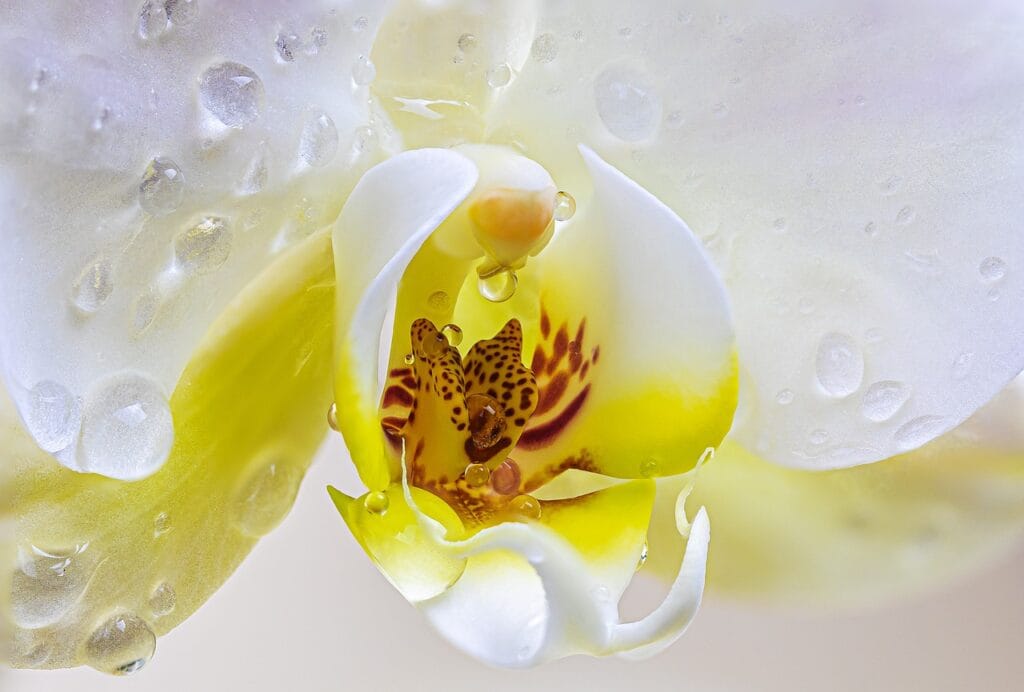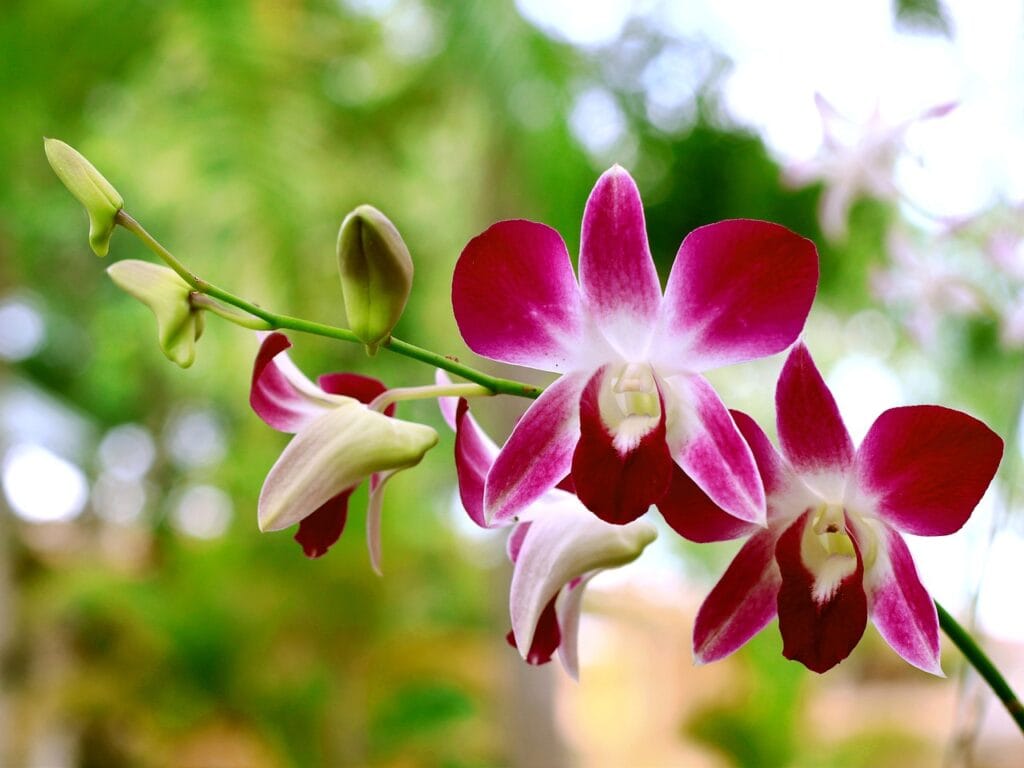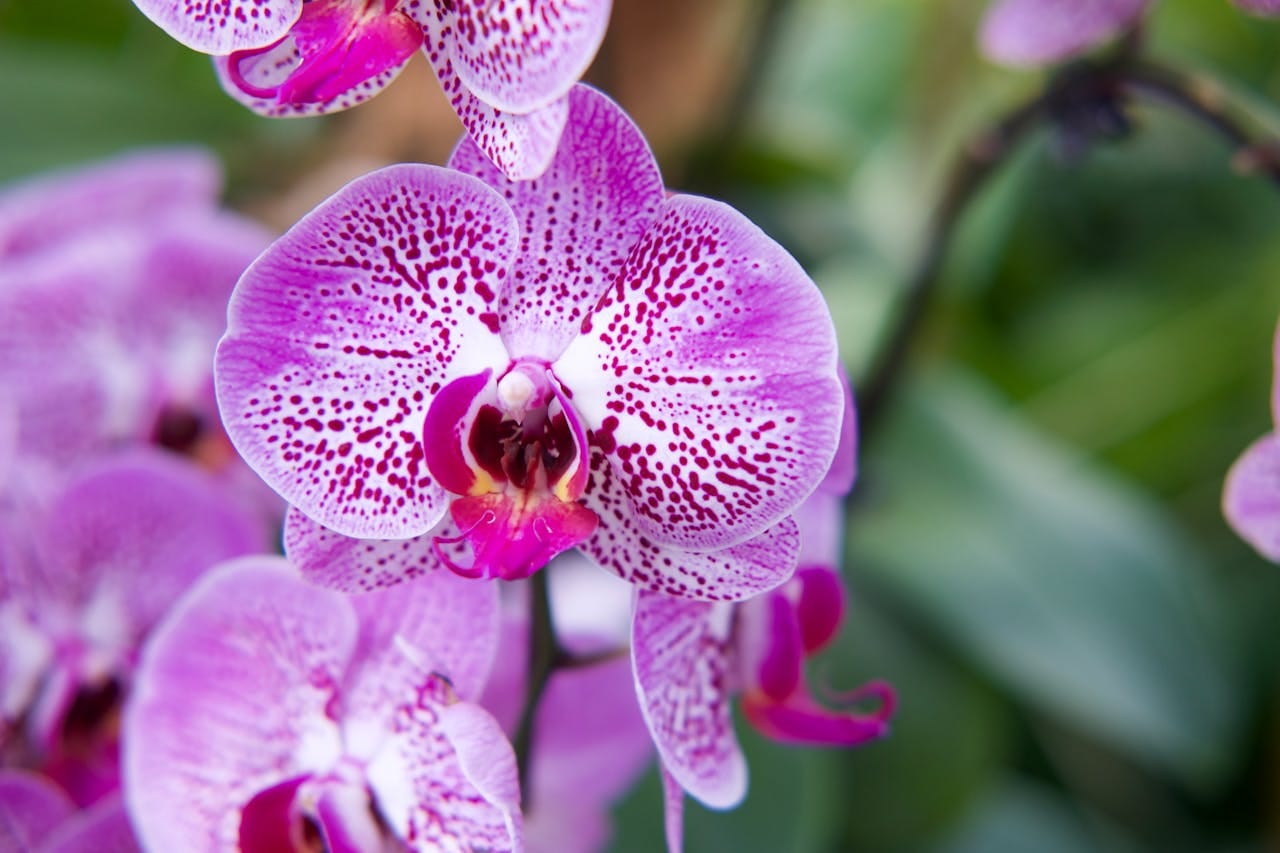You’ve got this gorgeous orchid sitting on your windowsill, but… no blooms. For months. Just green leaves and maybe a sad little stem. Sound familiar?
If you’re wondering how to make orchids bloom, you’re definitely not alone. A lot of home gardeners struggle with this, even if the plant looks healthy.
Thing is, orchids are a little picky—but once you get what they like, they’ll reward you with some seriously beautiful flowers.
In this post, we’ll cover what really matters: how to tell if you’ve got the right kind of orchid, what kind of light and care it needs to bloom, and how to deal with common problems that keep it from flowering.
Ready to finally get that orchid to bloom? Let’s do this.
Understand Your Orchid: Types and Blooming Patterns
Before we get into the nitty-gritty of how to make orchids bloom, let’s make sure we’re talking about the right kind of orchid. Not all orchids behave the same way, and knowing what you’re working with makes a big difference.
The most common type people grow at home is the Phalaenopsis, also called the moth orchid. It’s super popular because it’s relatively low-maintenance and can bloom once or even twice a year if it’s happy.
You might also come across Dendrobium, Cattleya, or Oncidium orchids. Each of these has its own blooming rhythm and care needs.
For example:
- Phalaenopsis orchids often bloom in late winter or early spring, but they don’t have a strict schedule.
- Dendrobiums usually bloom once a year and often need a cooler, drier period to kick things off.
- Cattleyas like bright light and tend to flower once or twice annually, depending on the variety.
If you don’t know what kind you have, check the label (if you still have it), or compare it to photos online. Getting this right will help you figure out what conditions your orchid needs to start flowering again.
Also, don’t expect constant flowers. Orchids bloom in cycles. Once flowers drop, the plant usually rests for a while before it starts preparing for the next show. That rest period isn’t a problem—it’s just how orchids work.
You may also like:
- How to Care for Ponytail Palm: The Ultimate Guide for Beginners
- How to Grow Garden Sage at Home: Tips for Lush, Flavorful Plants
Create the Perfect Environment for Your Orchid


One of the biggest secrets to figuring out how to make orchids bloom is dialing in the environment. Orchids won’t flower just because you water them—they need to feel like they’re in the tropics (but without the bugs and wild weather).
Good news is, you can totally recreate those vibes at home.
Temperature matters
Most orchids want warmth during the day (around 70–80°F / 21–27°C) and cooler temps at night (55–65°F / 13–18°C).
That drop in temperature at night? It’s not optional. It actually helps trigger blooming in many types, especially Phalaenopsis.
If your home is consistently warm 24/7, try cracking a window or moving the orchid to a cooler spot overnight.
Humidity helps—more than you think
Orchids are humidity lovers. If your air’s too dry (especially in winter or if you’re using heating), the plant can stay healthy-looking but refuse to bloom.
Aim for 50–70% humidity. Not there? Use a humidity tray, group your plants together, or get a small humidifier.
Don’t forget air circulation
Still air encourages mold, pests, and general sadness. Orchids love fresh air that moves gently—not drafts, not wind tunnels.
A ceiling fan on low or an open window nearby works wonders. Just avoid blasting them with cold air.
By tweaking your orchid’s environment, you’re setting the stage for blooms. Think tropical spa, not desert or cave. Once the plant feels at home, it’s way more likely to reward you with flowers.
You may also like:
- How to Care for Poinsettias: The Ultimate Guide for Healthy Holiday Blooms
- Grow Milkweed in Pots or Gardens: A Complete Care Guide
Light: The Make-or-Break Factor
Let’s be real: when it comes to how to make orchids bloom, light is everything. You could be doing everything else right—perfect water, perfect pot—but if the lighting’s off, your orchid’s just gonna sit there, leafy and stubborn.
How much light is enough?
Most orchids, especially Phalaenopsis, want bright, indirect light. That means they love being near a window but not in direct sunlight all day, which can scorch the leaves.
East-facing windows are usually perfect. South or west-facing windows can also work if you filter the light with sheer curtains.
If your orchid’s leaves are dark green, it probably needs more light.
Light green with a hint of yellow? That’s usually the sweet spot.
Leaves looking pale or sunburned? Yeah, time to back it away from the sun.
Grow lights can save the day
No good windows? No problem. LED grow lights are super helpful—just make sure they’re full spectrum and not too close to the plant.
Orchids usually do best with 12–14 hours of light per day during their active growing phase, so using a timer is a good move.
Real talk: most orchids that don’t bloom just aren’t getting enough light
You might be babying your orchid and wondering why it won’t bloom again. Often, it’s just that it’s chilling in the shadows.
Move it closer to light (but not too close) and give it a few weeks. You’ll often see a new spike start to form when light levels hit the sweet spot.
You may also like:
- How to Care for Tulips That Bloom Beautifully: A Beginner’s Guide
- Gladiola Flower Guide: How to Grow and Care for Gladiolus
Watering and Feeding Orchids for Blooms


Now that your orchid’s soaking up the right light, let’s talk about watering and feeding—two things that seem simple but trip up a lot of folks.
If you’re serious about how to make orchids bloom, this part matters just as much.
How often should you water orchids?
It depends on the type of orchid, your climate, and the season. For Phalaenopsis orchids (the most common), once a week is usually enough.
But here’s the trick: don’t water on a schedule—water based on feel. Stick your finger in the potting mix. If it feels dry about an inch down, it’s time to water.
Too much water is the fast track to root rot, which pretty much kills any hope of blooming. Always use pots with drainage holes, and let the water run through completely. No sitting in soggy trays.
Feeding makes a difference
Orchids aren’t heavy feeders, but they do need some nutrition to build up the energy to flower.
Use a balanced orchid fertilizer (like 20-20-20 or a “bloom booster”) every 2–4 weeks during the growing season. Go light—half strength is usually enough.
If you’ve never fertilized and your orchid hasn’t bloomed in ages, there’s a good chance it just doesn’t have the nutrients it needs to produce flowers. Think of fertilizer like giving your plant a power-up.
A quick note on water type
Tap water is fine in most areas, but if it’s super hard or soft, switch to rainwater or distilled. And avoid using softened water—it can build up salt in the roots and mess with nutrient absorption.
Bottom line? Water when it’s needed, feed just enough, and always give your orchid a chance to breathe. Happy roots = higher chance of flowers.
You may also like:
Repotting and Pruning Orchids to Encourage New Blooms
Alright, let’s talk about something that feels a bit intimidating to some people: repotting and pruning.
But here’s the truth—if you’re serious about how to make orchids bloom, these two things can make a huge difference.
And no, you won’t kill your orchid by touching it. Promise.
When to repot
If your orchid’s roots are spilling out of the pot, or the potting mix looks more like sludge than bark, it’s time to repot.
Most orchids need a fresh setup every 1–2 years. Old potting mix breaks down and stops draining properly, which means unhappy, soggy roots.
Best time to repot? Right after blooming, when the plant is resting. That way, you’re not interrupting the flower show.
How to do it (without drama)
Use a clear plastic pot with drainage holes (helps you see the roots) and orchid-specific bark mix.
Gently remove the plant, shake off the old mix, and trim away any mushy or dried-out roots. Then replant it, keeping the roots snug but not stuffed.
It’s like giving your orchid a fresh start—better airflow, more space, healthier roots. All of that adds up to more energy for blooming.
Should you prune the flower spike?
Yep—but only at the right time. If you’ve got a Phalaenopsis and the flower spike turns brown, you can cut it back all the way to the base.
If it’s still green, try trimming it just above a node (those little bumps along the stem). Sometimes, this encourages a side shoot and a new bloom.
A well-timed trim or repot might be the nudge your orchid needs to shift back into bloom mode. Just be gentle and clean your tools first—your orchid will thank you later.
You may also like:
Troubleshooting: Why Isn’t My Orchid Blooming?


So, you’ve got the right orchid, decent light, regular water… and still no flowers? Yeah, it happens.
Let’s break down the most common reasons orchids refuse to bloom and how to fix them. If you’re trying to figure out how to make orchids bloom and nothing’s working, this is your checklist.
1. Not enough light
We’ve said it before, but it’s worth repeating: this is the #1 reason. Orchids can look totally fine—nice green leaves, healthy roots—but if they’re not getting enough light, they’ll skip blooming completely.
Try moving your plant closer to a brighter window or invest in a grow light. Watch the leaf color: deep green usually means too little light.
2. No temperature drop at night
Orchids, especially Phalaenopsis, need a clear difference between day and night temps to trigger blooms. If your house stays the same temperature 24/7, the plant might not “realize” it’s time to flower.
Try moving it to a cooler room at night or cracking a window for a few weeks (as long as it’s not freezing out).
3. Overwatering or poor drainage
If the roots are soggy and suffocating, they can’t take in the nutrients needed for flowering. Always check the pot and mix. If the roots are brown and mushy, it’s time to repot—and cut back on watering.
4. No rest period
Some orchids, like Dendrobiums or Oncidiums, need a rest period after blooming. That means less water, less food, and cooler temps for a few weeks. If you keep treating them like they’re in bloom mode all year, they might not “reset.”
5. Not enough nutrients
If you’ve never fertilized your orchid, it might be too weak to bloom. Start with a gentle feeding routine and give it time to bounce back.
The good news? Most of these fixes don’t take much. A few small changes can make all the difference—and once you see that flower spike forming, it’s totally worth it.
You may also like:
Conclusion: Helping Your Orchid Bloom Again
So, how to make orchids bloom? It really comes down to creating the right conditions and being a little patient.
Make sure your orchid has enough indirect light, give it that crucial temperature drop at night, water only when it actually needs it, and feed it regularly but lightly. Keep the roots healthy, repot when the mix breaks down, and don’t forget to give it a rest when it’s done blooming.
When everything’s dialed in, your orchid won’t just survive—it’ll reward you with those gorgeous, long-lasting blooms that made you fall in love with it in the first place.
If orchids have got you hooked on beautiful blooms, you’ll love our complete guide on how to grow and care for roses. Go check it out and keep your garden blooming!
FAQ: How to Make Orchids Bloom
1. How long does it take for an orchid to bloom again?
Most orchids bloom once or twice a year. After the flowers fall, it can take several months for a new spike to appear, depending on the type and conditions.
2. What should I do if my orchid isn’t blooming?
Check the light first—it’s often the main issue. Also look at temperature, watering habits, and whether the plant needs a rest period or fresh potting mix.
3. Do orchids need direct sunlight to bloom?
Nope. They prefer bright, indirect light. Direct sunlight can actually burn the leaves. East-facing windows are usually best.
4. Should I cut the flower spike after the blooms fall off?
If it’s brown and dry, yes—cut it back to the base. If it’s still green, try trimming just above a node to see if it sends out a new bloom.
5. Can I use regular plant fertilizer on orchids?
It’s better to use fertilizer made for orchids. Look for a balanced mix (like 20-20-20) or one labeled as a “bloom booster.” Use it sparingly.
6. Do orchids need a specific temperature to bloom?
Yes. Most orchids bloom best with warm days and cooler nights. A 10°F (or 5°C) drop at night can help trigger flowering.




